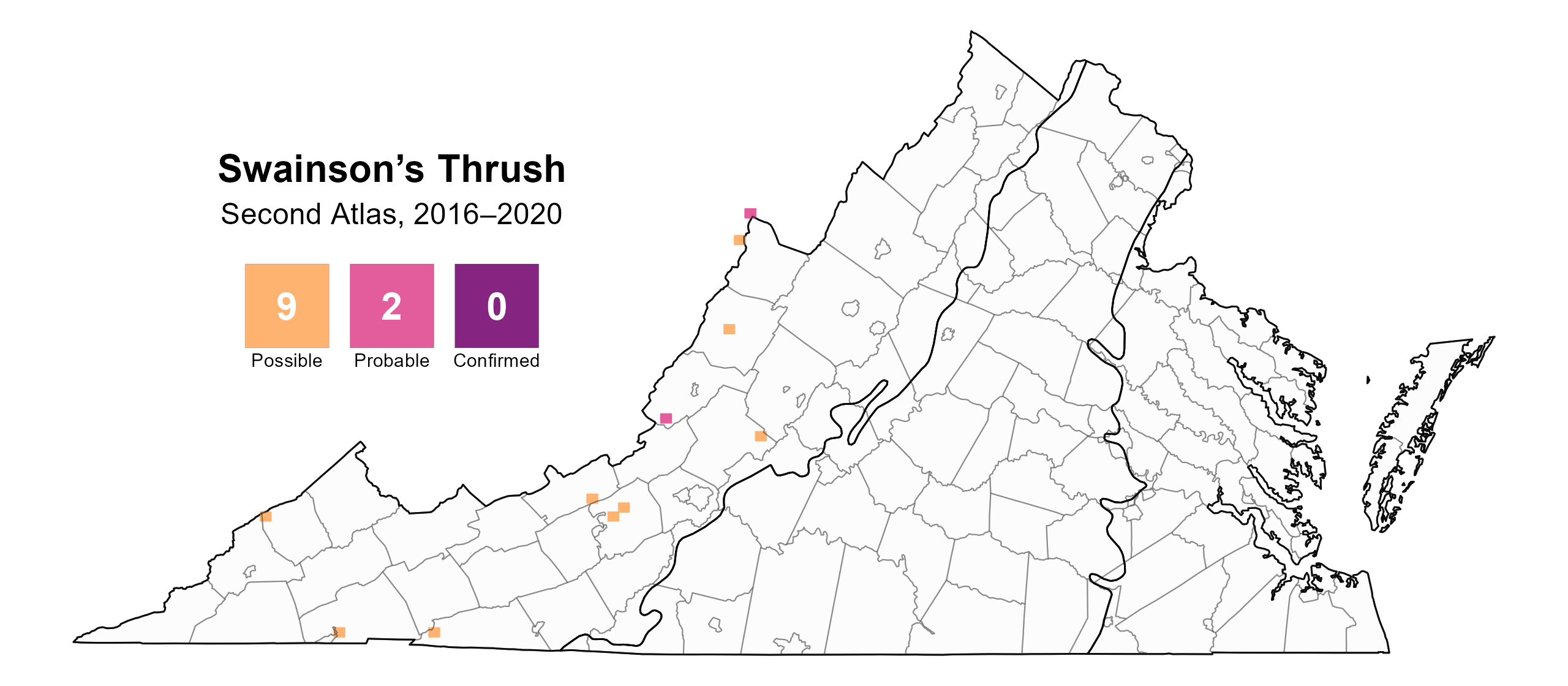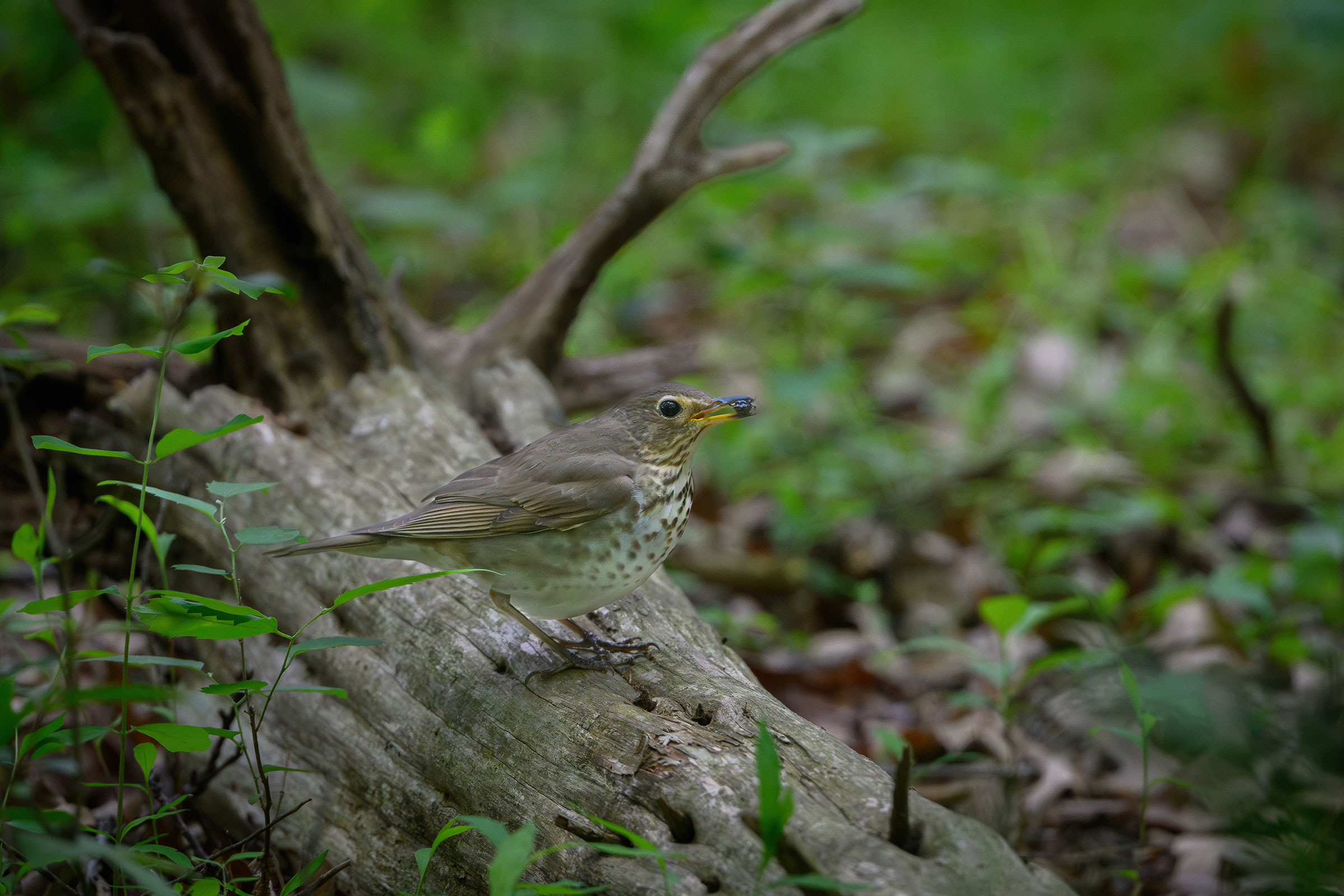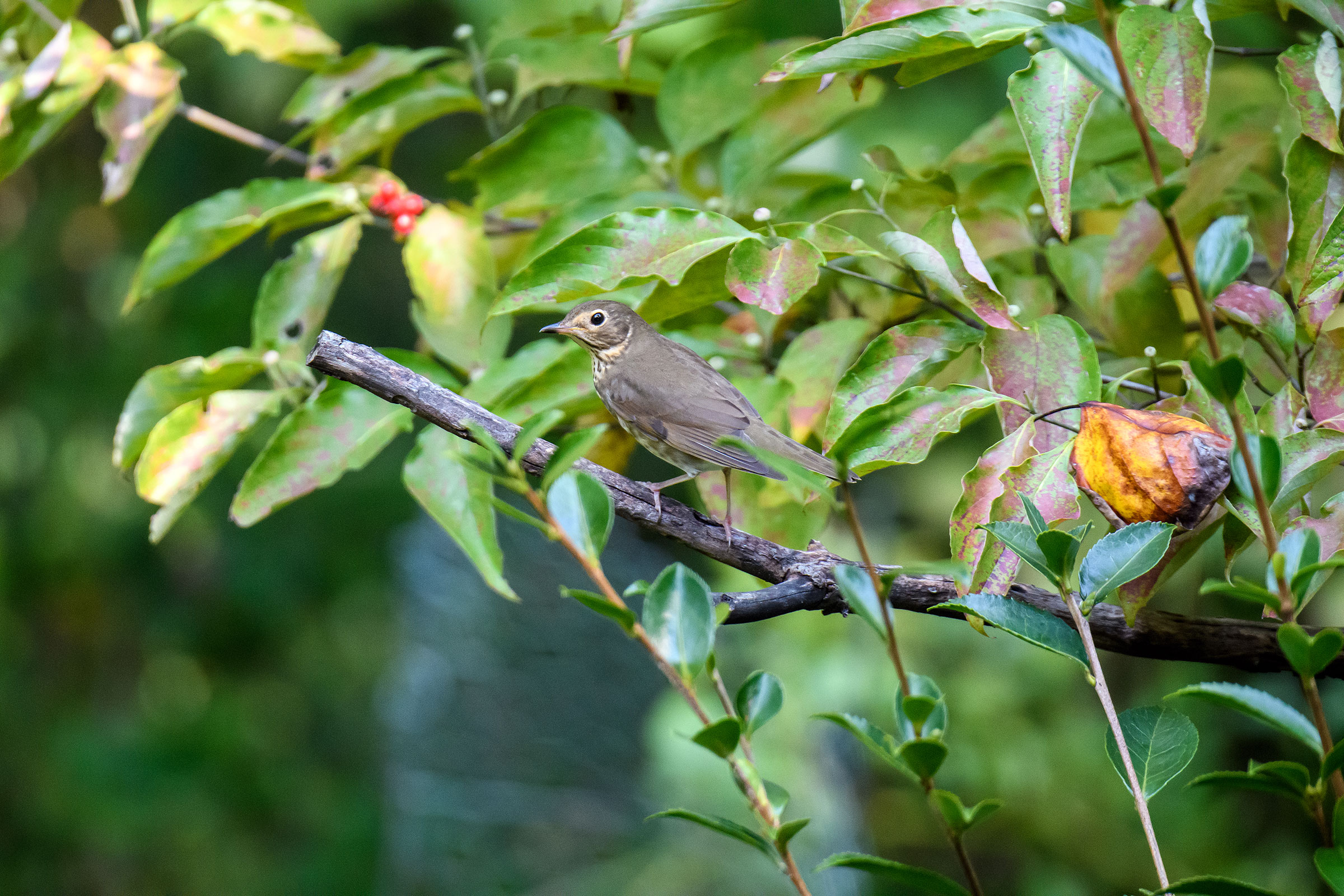Introduction
Swainson’s Thrush breeds primarily in Canada, New England, and mountainous regions of the western U.S. In the eastern U.S., Swainson’s Thrushes are known to be casual breeders in Pennsylvania and West Virginia and probable breeders in mountainous portions of Virginia. They also are long-distance migrants, spending the winter in South and Central America and migrating throughout much of the U.S., including Virginia in the Piedmont and Mountains and Valleys region (Rottenborn and Brinkley 2007; Mack and Yong 2020). They primarily breed in coniferous forests, and specifically, in Virginia, they breed in high-elevation spruce-fir forests (Westphal et al. 2008; Wilson and Watts 2012).
Breeding Distribution
Limitations imposed by the data prevented the development of distribution models for the Swainson’s Thrush. For more information on its distribution, see the Breeding Evidence section.
Breeding Evidence
No Swainson’s Thrushes were confirmed breeders in Virginia (Figure 1). Probable breeders were detected at high-elevation sites in Alleghany and Highland Counties. In Alleghany County, birds were seen exhibiting courtship behavior in George Washington National Forest, and in Highland County, a bird was observed exhibiting “agitated behavior” near Locust Springs. Possible Swainson’s Thrush breeding was also noted in the additional counties of Bath, Bedford, Bristol, Giles, Grayson, Montgomery, Smyth, and Wise Counties. During the First Atlas, only four breeding observations (probable and possible) were recorded (Figure 2).
For more general information on the breeding habits of this species, please refer to All About Birds.

Figure 1: Swainson’s Thrush breeding observations from the Second Atlas (2016–2020). The colored boxes illustrate Atlas blocks (approximately 10 mi2 [26 km2] survey units) where the species was detected. The colors show the highest breeding category recorded in a block. The numbers within the colors in the legend correspond to the number of blocks with that breeding evidence category.

Figure 2: Swainson’s Thrush breeding observations from the First Atlas (1985–1989). The colored boxes illustrate Atlas blocks (approximately 10 mi2 [26 km2] survey units) where the species was detected. The colors show the highest breeding category recorded in a block. The numbers within the colors in the legend correspond to the number of blocks with that breeding evidence category.
Population Status
Due to limited detections during point count surveys, no abundance model could be developed for the Swainson’s Thrush. Similarly, data from the North American Breeding Bird Survey were insufficient in determining reliable population breeding trend estimates for the Swainson’s Thrush. However, it is a very uncommon breeder in the state.
Conservation
Because the Swainson’s Thrush rarely breeds in the Commonwealth, it is not the focus of any specific conservation actions in the state. However, efforts to protect spruce-fir forests species will also benefit this species.
Interactive Map
The interactive map contains up to six Atlas layers (probability of occurrence for the First and Second Atlases, change in probability of occurrence between Atlases, breeding evidence for the First and Second Atlases, and abundance for the Second Atlas) that can be viewed one at a time. To view an Atlas map layer, mouse over the layer box in the upper left. County lines and physiographic regional boundaries (Mountains and Valleys, Piedmont, and Coastal Plain) can be turned on and off by checking or unchecking the box below the layer box. Within the map window, users can hover on a block to see its value for each layer and pan and zoom to see roads, towns, and other features of interest that are visible beneath a selected layer.
View Interactive Map in Full Screen
References
Mack, D. E. and W. Yong (2020). Swainson’s Thrush (Catharus ustulatus), version 1.0. In Birds of the World (A. F. Poole and F. B. Gill, Editors). Cornell Lab of Ornithology, Ithaca, NY, USA. https://doi.org/10.2173/bow.swathr.01.
Rottenborn, S. C., and E. S. Brinkley (Editors) (2007). Virginia’s birdlife: An annotated checklist. 4th edition. Virginia Society of Ornithology.
Westphal, M. J., M. B. Simpson, N. Murdock, and A. Laughlin (2008). Range expansion of Hermit (Catharus guttatus) and Swainson’s Thrushes (Catharus ustulatus) in the Southern Appalachians. The Chat 72:126–132. https://www.carolinabirdclub.org/chat/issues/2008/v72n4Catharus.pdf.
Wilson, M. D. and B. D. Watts. 2012. The Virginia avian heritage project: A report to summarize the Virginia avian heritage database. CCBTR-12-04. Center for Conservation Biology Technical Report Series. College of William and Mary and Virginia Commonwealth University, Williamsburg, VA, USA. 48 pp.



